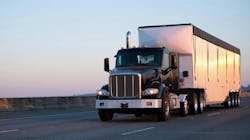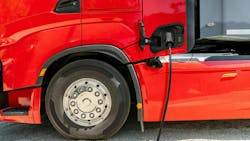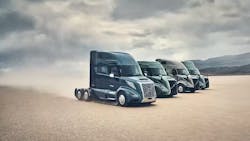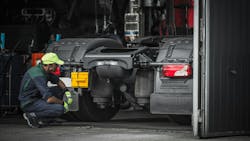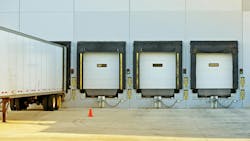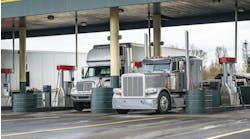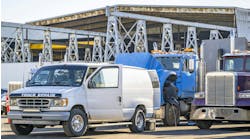Through regular columns, multiple industry experts share their insights, musings, and knowledge with FleetOwner readers. In 2024, readers were most interested in hearing expert opinions on electric vehicles and emissions reduction, different management tactics, detention, and technology.
Here are the top 10 most-read IdeaXchange articles of 2024.
10. Roeth: Fine-tuning realistic expectations
Expectations are a funny thing. They can make someone feel pleasantly surprised or disappointed. Sometimes people have unrealistic expectations, which ultimately will cause them to be more than a little disappointed.
That may be the case with battery electric trucks. NACFE staff members have been sharing comments they’ve been hearing from fleets that are disgruntled with the performance of their BEVs, and I can't help but wonder if this has anything to do with expectations. Read more…
9. Roeth: An interim solution for electric power
Getting electricity to fleet depots has been identified as one of the biggest challenges facing fleet managers as they try to transition to battery electric trucks. It seems like fleets can get trucks from BEV manufacturers in a matter of months, but getting the electric service to the site can take a year or more.
No fleet likes to see trucks sitting on the lot, so having BEVs without a way to power them could prevent some fleets from moving to BEVs. Read more…
8. Roeth: Trucking isn't just one thing
While they were shy in making a big announcement about it, Volvo recently teased that they would begin selling a Class 8 electric truck with a sleeper—an electric VNL—in late 2025. Volvo was skimpy on the details of the electric VNL, so we don’t know if they are going to integrate some of the features of the diesel version or not, but it sure looks like they are working on a sleeper version of a battery-electric vehicle.
I am excited that a truck manufacturer is working to tackle electrifying the long-haul sleeper segment of trucking. So many battery electric vehicle naysayers are focused on that segment. They forget that the trucking industry is actually comprised of a variety of duty cycles. They disparage BEVs because batteries do not have the range to operate in long-haul duty cycles. Read more…
7. Clark: Safety equipment needed when working on EVs
The main concerns surrounding adding battery electric trucks to your fleet have often centered on range per charge, lack of charging stations, high cost of the vehicles, and maintenance changes.
A recent NationaLease meeting addressed that last concern regarding maintenance. Shaun Loftis, trainer at Autocar Trucks, talked about the new equipment needed for EVs and what safety concerns maintenance teams should be aware of. It’s true that standard maintenance items on an EV are fewer than those needed for an ICE, but it’s essential to remember that you are working with electricity. Read more…
6. Clark: The three phases to getting workforce buy-in for major changes
Change is inevitable, but it’s never easy, especially when it comes to significant changes within an organization. At a recent NationaLease event, Ryan Schreiber, chief growth officer at Metafora, spoke about the need for digital transformation and how to make that initiative a success effectively.
This last point is essential since Schreiber noted that, according to a 2021 study, 70% of digital transformations fail. That’s a stunning number, and although there are multiple reasons for the failure, Schreiber attributes insufficient change management as a major culprit. Read more…
5. Akin: A comprehensive guide to fleet risk management
Fleet risk management is a strategic approach focused on identifying, assessing, and mitigating risks associated with managing a fleet of vehicles. It plays a crucial role in ensuring the safety of drivers and the public, safeguarding assets, and enhancing operational efficiency.
An effective FRM program helps organizations minimize the potential for accidents, comply with regulatory requirements, and achieve financial savings by reducing liability and insurance costs. Read more…
4. Clark: Detention is the bane of drivers and fleets
The primary goal of fleets and drivers is getting their product to its destination and loading or unloading it safely and on time. But there are challenges to achieving that goal, some occurring before they reach their destination and others after they have arrived.
Drivers have to contend with traffic congestion (whether due to regular traffic on major highways, accidents, or infrastructure repairs), severe weather conditions, breakdowns, and changing regulations. The delays that occur before the vehicle arrives at its destination create a domino effect that impacts the entire supply chain, affecting resource allocation, increasing operational costs, and endangering customer relationships. Read more…
3. Petty: It's never too late to change direction
“Drivers were initially very hesitant about a woman manager,” Shana Barton, director, logistics support at Oldcastle APG, said. “But they quickly learned I was open to learning and had a genuine interest in them and what they were doing. We made great strides in our fleet. I will be forever grateful for everything they taught me.”
Shana Barton was raised in Minnesota as an only child of parents who divorced when she was young. She lived with her working mother, who was a role model for hard work and determination. Read more…
2. Does your fleet have a driver pay problem or a messaging problem?
There have been quite a few headlines over the past month about what’s happening with driver pay—and they all seem to be painting a different picture.
Recently, I saw articles promoting a narrative that pay has declined sharply this year. Within the same work week, I saw several other articles saying pay has jumped over the past two years, by about the same amount the prior articles said pay declined. Read more…
1. Fontana: Cameras and fleet safety
Many fleets wrestle with deciding whether to install camera systems on their vehicles. Today’s advanced driver assistance systems use cameras and sensors to monitor the roadway and area surrounding the truck. The purpose of ADAS, which includes collision mitigation, lane departure warning, and blind spot warning, is to improve safety. Many fleets are investing in ADAS, and it’s something every fleet should consider.
In addition, some fleets are spec’ing forward-facing and inward-facing cab cameras, which tend to be more controversial than the sensors that are part of ADAS. The presence of cameras, especially those that face inward, can make drivers uncomfortable and feel like their privacy is being invaded. Read more…
Along with these articles, FleetOwner publishes several popular annual features that garner attention throughout the trucking and transportation industries. These include our annual looks at the largest commercial transportation systems in the U.S., the FleetOwner 500: For-Hire and FleetOwner 500: Private Fleets.
Our annual profiles of women in the industry, Women in Transportation 2024, were published this summer. Each year, FleetOwner recognizes the transportation operations of private fleets with the FleetOwner Private Fleet of the Year award. This fall, we expanded and rebranded our annual New Models to the 2025 FleetOwner vehicle guide, our largest-ever look at the next generation of heavy-duty, medium-duty, light-duty, and alternative-powered trucks and vans.
We put a bow on the year with the 2024 Trucking by the Numbers feature, an info-graphical look at the facts and figures that make up the trucking and transportation industries. To view what's ahead for FleetOwner in the new year, please check out our 2025 Media Kit.

